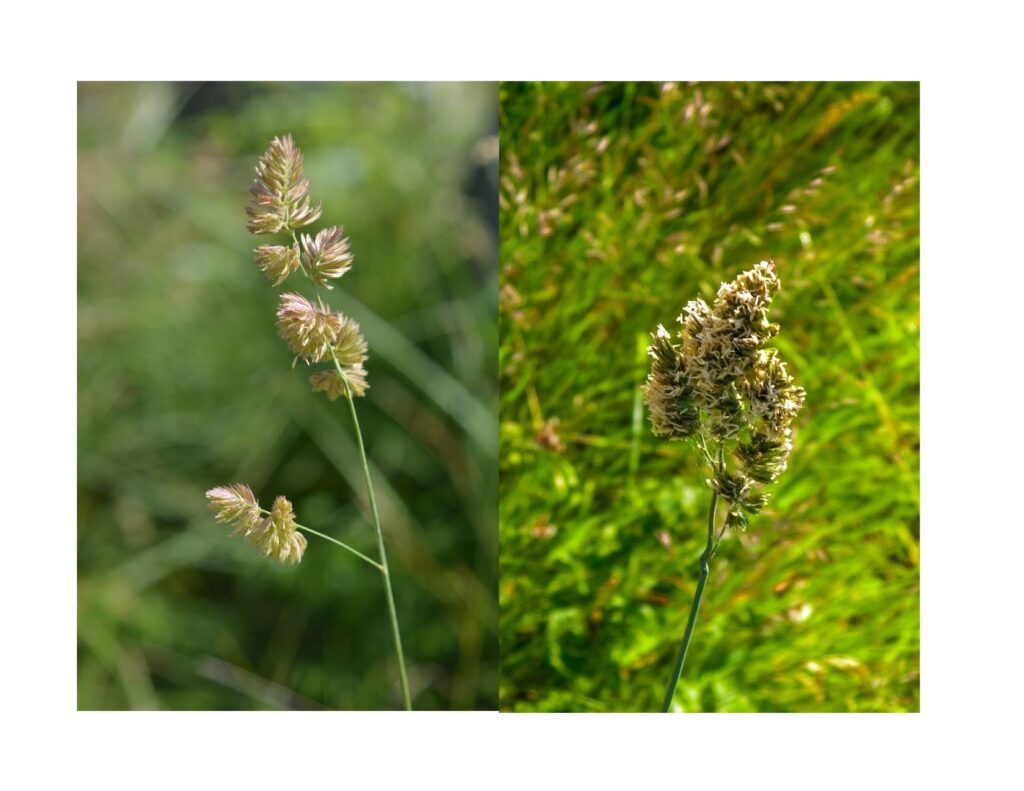It’s the time of the year when hay lofts are beginning to empty, hay producers are busy reseeding and/or fertilizing their fields, and livestock owners are evaluating their hay needs for the upcoming season. What do you know about the hay that you’re feeding?

Well, not all hay is created equal. In fact, it varies greatly according to plant type, quality, growing region, and intended use. The two most popular types of hay used as feed for livestock are legumes and grass hay.
Legumes
Alfalfa and clover (both red and white) are the most well-known and widely fed legumes that are commonly incorporated in many feed programs. These hays are higher in protein and minerals and are more palatable than grass hays.
Alfalfa hay is an excellent source of good quality protein and fiber and particularly is high in energy and an excellent source of vitamins and minerals. When alfalfa is properly cured, it is the best of the legume hays from a nutrient standpoint. It has the most feed value of all the perennial pasture forages and is commonly used for horses, dairy cows, beef cattle, sheep, chicken, turkeys, and many other farm animals. Alfalfa’s high protein content makes it ideal for milk-producing livestock and animals with high energy requirements.
Red Clover has always had the reputation of being slow to dry when compared to alfalfa. For first cutting, you might need to ted it one time after about two hours of drying. An interesting quality of red clover is that it has a higher concentration of pectins than alfalfa. It also provides a greater proportion of by-pass protein and results in less rumen ammonia being produced from the plant’s protein.
Red clover remains a difficult crop to bale as dry hay without considerable leaf loss but for haylage or baleage, perhaps more producers need to be utilizing the species on fields where alfalfa is difficult to establish or is short-lived.
White Clover is the most important pasture legume. It is a highly palatable, nutritious forage for all classes of livestock. White clover is commonly planted with Orchard grass, Rye grass and most fescues. It rarely grows tall enough to be harvested for hay, silage, and green chop.

Grass Hay
Grass hay differs from legumes in that it is composed of long, hollow stems that grow up to 60 inches tall with leaves that can grow up to 17 inches. Timothy and Orchard Grass are the most common grasses used as cattle and horse feed. Its low protein, high fiber, and high energy content make it easily digestible and can be fed regularly to satisfy appetite without excess calories and protein.
Livestock with higher protein requirements are often fed a comprehensive feed program including a mixture of legumes and grass mixture.
Timothy is a wide bladed bright green coarse hay with long seed heads measuring one to three inches densely packed with spikelets that flower on the first cutting. The second cutting is softer and darker with smaller heads.
There are two cuttings of Timothy grass in our area. The first cutting is coarser, lower in protein and offers more chewing time. The second cutting is brighter in color, softer and much preferred by the retail client due to its color and texture. Timothy is high in fiber, especially when cut late and considered part of the standard mix for grass hay that provides quality nutrition.
Orchard Grass is a highly palatable grass with a high nutrient content. Orchard Grass is higher in protein, higher in calorie content and contains the same balanced levels of calcium and phosphorus as Timothy grass. The higher calorie content of Orchard Grass is a result of higher fiber digestibility compared to Timothy Grass. The high nutrient intake delivered by Orchard Grass hay translates into potentially less grain needed to eat to satisfy energy and protein requirements.

Compared to Timothy Grass, Orchard Grass grows better in moderate drought conditions and provides a solid three hay cuttings per year. With three cuttings instead of two cuttings, Orchard Grass produces consistent soft texture hay that is readily consumed with minimal or no waste.
For more information to consider about hay, be sure to read the article below by our state trustee, Roger Baker.
And for suggestions on selecting the appropriate hay for your horse, check out this article below.